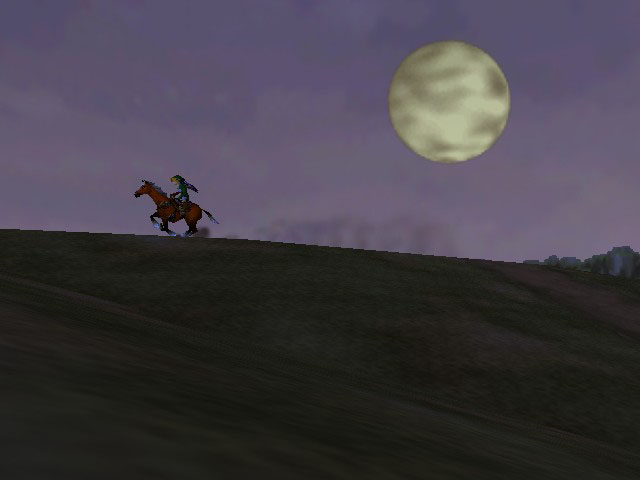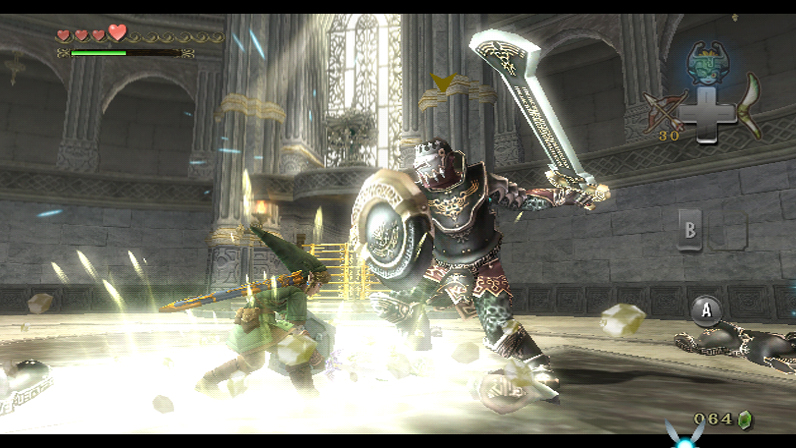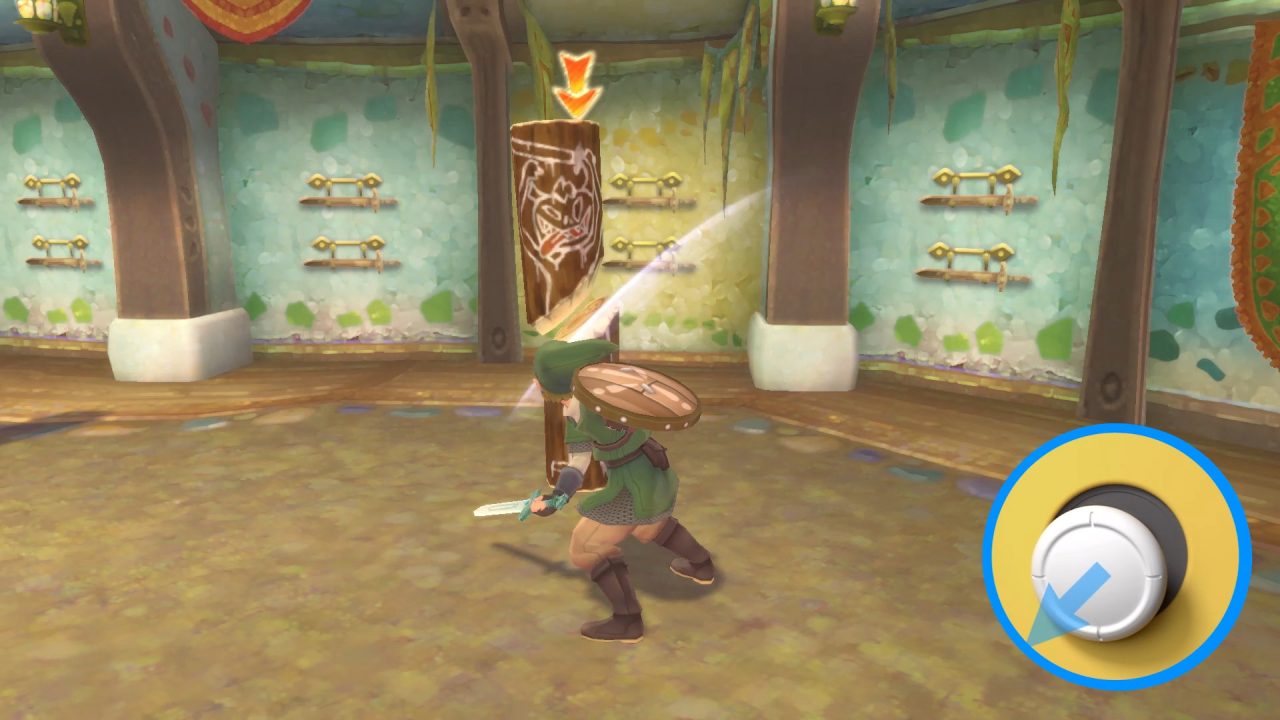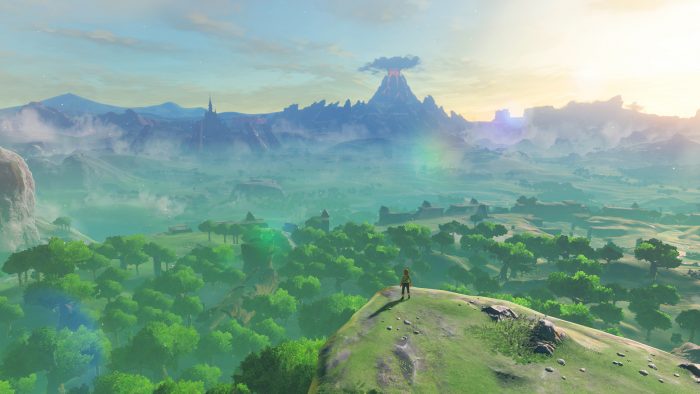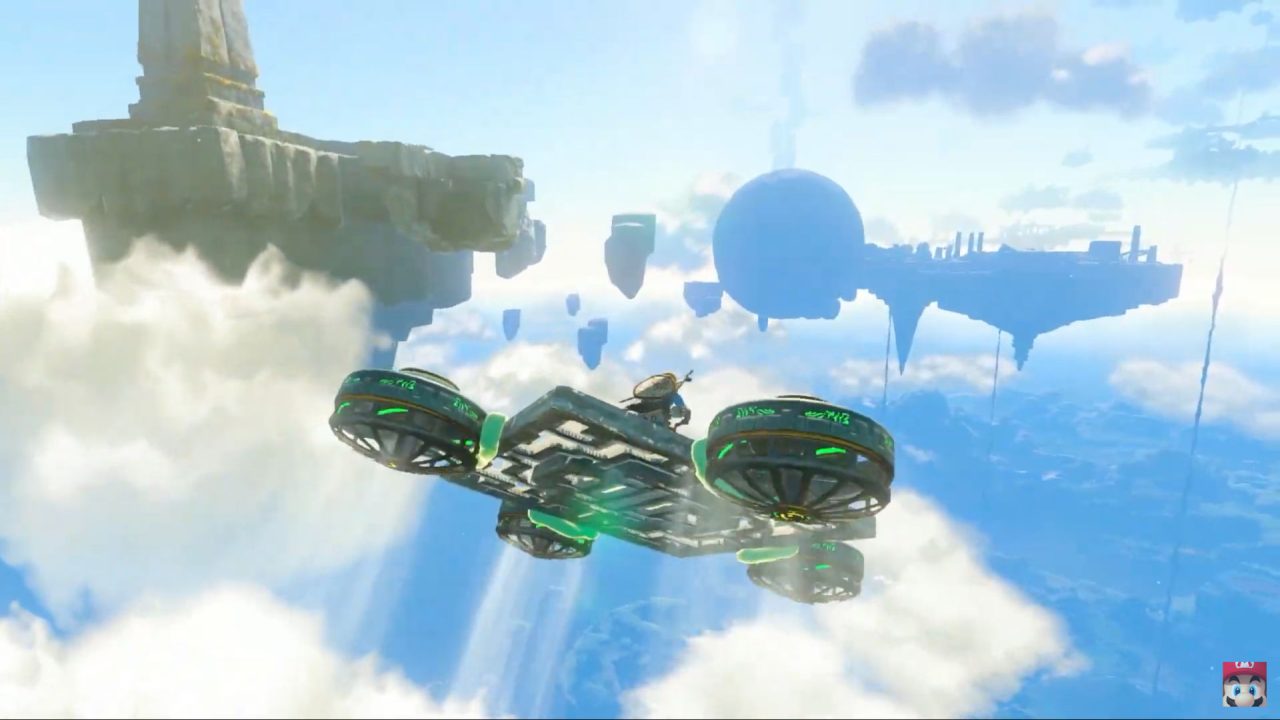Welcome to part two of RPGFan’s “So you want to get into the Legend of Zelda series…” primer, where we go through the three-dimensional Legend of Zelda titles available on home consoles. Check out part one for a deep dive into the 2D entries, and part three for the Top 5 Places to Start your Zelda journey.
Platform Key
- FDS: Famicom Disk System
- NES: Nintendo Entertainment System
- SFC: Super Famicom
- SNES: Super Nintendo Entertainment System
- N64: Nintendo 64
- GCN: GameCube
- NSW: Switch
- NSO: Nintendo Switch Online
- GB: Game Boy
- GBC: Game Boy Color
- GBA: Game Boy Advance
- NDS: Nintendo DS
- 3DS: Nintendo 3DS
- VC: Wii/Wii U/DSi/3DS Virtual Console
Note: all Nintendo Switch games are playable on Switch 2 consoles; version differences noted as applicable.
The Legend of Zelda: Ocarina of Time (1998 & 2011)
N64, GCN, 3DS (3D version), VC, NSO
What it’s about: The Legend of Zelda: Ocarina of Time is Nintendo’s first foray into 3D action adventure RPG design, and it is considered by many to be one of the most innovative and important games ever made. In it, you play as Link, a child raised among the ageless forest children called the Kokiri. His duty and burden is to grow older, so that he may gain the strength and knowledge needed to comprehend and ward darkness from the land. His aging comes with responsibilities (i.e. save the world) and consequences, such as being shut out by his Kokiri companions. Along the way, Link must bend time and his bodily form to befriend seven sages, who will help him fight Ganondorf. This fable of age, responsibility, and destiny is timeless, and combined with tropes of the Hero’s Journey, OoT serves up a highly compelling, some say unmissable, narrative.
Gameplay and Innovation: There were 3D action adventure games before Ocarina of Time, such as Tomb Raider, Crash Bandicoot, Croc, etc. However, these games relied on 2D design paradigms and gameplay/control compromises to make their platforming and action systems work together. Where Tomb Raider compromises on movement fluidity for precision through tank controls, Ocarina of Time automates jumping and object scaling to avoid the foibles of early analog stick movement. Where Croc struggles in combat encounters, especially one-on-one (some of its bosses are yikes) due to hitbox and camera issues, Ocarina of Time introduces lock-on to turn every encounter into a compelling minigame. Where Crash relegates movement to tripartite railways, Ocarina of Time features fully 3D levels with looping rooms, verticality, and item-based movement. Ocarina did not invent a whole lot (outside of lock-on), but refined things better than its peers to fit into the new third dimension.
Why you may, or may not, like this entry: Ocarina of Time is a very early 3D home console game. Even if it is a smooth and beautiful game compared to its early peers, it still retains their erstwhile camera, movement, and animation jank. Despite this, Ocarina of Time is a mystical object; even the die-hardest graphics and framerate purists are drawn to its siren’s call. I have witnessed friends, enemies, and all my game design students in between go from “groan” to “GOAT” over playthroughs of this game.
Best played on: I have crushed this game multiple times on every console it has released on, so I can confidently tell you it plays great wherever it is supported. I have a personal affection for the GameCube port for its Master Quest mode, which flips the game’s dungeons and makes the game slightly harder. However, I usually return to Ocarina of Time 3D on 3DS for its awesome stereoscopic 3D and gameplay improvements. Bottom line, though: play wherever you can.
The Legend of Zelda: Majora’s Mask (2000 & 2015)
N64, GCN, 3DS (3D version), VC, NSO
What it’s about: The Legend of Zelda: Majora’s Mask is, in a way, a sequel to Ocarina of Time, though its place in the timeline and canon is a bit muddy. You follow Link as he searches for his lost companion, Navi, through an underworldly version of Hyrule called Termina. Theories vary on how Link arrived in this place, with many concluding that he and/or his companion Navi died after the events of Ocarina of Time. In any case, Termina is strange, and its inhabitants are even stranger. There’s an uncanny, noisy vibe to the place, with its repetitive oddities and heightened hostility — even the Moon is out to kill everyone. Where Ocarina is a game about new life and growing up, Majora’s Mask is a game about death and life’s many cycles, with more ecological undertones than its predecessors.
Gameplay and Innovation: Majora’s Mask, for better or worse, invokes many new mechanics related to the isolated passage of time. Ocarina, of course, allows you to travel between future and present, but Majora’s Mask is far more focused on the events of three concurrent days. As such, it features rich NPC pathing and world event calendars, to a level far beyond its peers in the 3D videogames of the 20th century. It also has a strict time limit, as the world ends in three days, meaning that you must be mindful of time’s passage and control it by either passing or reversing time with Link’s ocarina.
Why you may, or may not, like this entry: I want to firstly dispel a misconception folks have about this game, namely that it introduces unmanageable stakes due to the time limit. After the first cycle, during which you must at least find the ocarina, the only stakes of the game’s time “limit” are your rupees and consumables. I find it best not to think of the time element as a limit but as a cycle, allowing you to re-experience the same three days and nights (up to about an hour in real life) as often as you like. Even if you’re put off by this, I encourage you to give the game a chance; the looping component makes this game by far the best “hangin’ out” Legend of Zelda title. However, if you dislike the uncanny, strange, or morbid, or if you find the crushing reality of time’s unforgiving and eternal passage too stressful, maybe this one is not for you. I think everybody else should give Majora’s Mask a shot.
Best played on: I have experienced a fair bit of lag when playing Majora’s GameCube port, but the game runs great in all the other places I’ve tried. Just like with Ocarina, I am slightly partial to the 3DS version, as it is relatively cheap and the 3D effect works well (perhaps even better than Ocarina, as it ties perfectly into the game’s uncanniness).
The Legend of Zelda: The Wind Waker (2002 & 2013)
GCN, Wii U (HD version), NSO (Switch 2 only)
What it’s about: Today is Link’s birthday, and as all young men on Outset Island do when they reach a certain age, he gets a cool tunic and some familial artifacts, such as a nifty telescope from his sister Aryll. Unfortunately, the first thing he sees out of his new telescope is an agent of Ganondorf stealing Aryll away. To save his sister, Link must sail the high seas and contend with pirates, sea creatures, the dark forces of Ganondorf, and his most difficult challenge yet: his grieving grandmother.
The Wind Waker is a seafaring tale, and as such it troubles the traditional exploration of open-world games: where past Legend of Zelda titles are about traversing puzzly grasslands, The Wind Waker is more dungeon- and town-focused, with an ocean exploration twist. There is treasure (booty) to be found on the ocean, and there are plenty of strange things in the water (besides booty), but the items you unlock in dungeons rarely matter on the high seas — out there, it’s just you, your boat, and the motion of the ocean (and booty). The vibey, flat ocean exploration of Wind Waker perforates its more exciting, vertical island beats to great effect, meaning you may not miss Ocarina‘s or Majora‘s pastoral prairies.
Gameplay and Innovation: Sailing is the most obvious innovation here. More linear exploration methods appear in The Wind Waker’s DS follow-ups, and this game teases those designs well, with oceanic challenges, treasure, storms, and other sailing events. Furthermore, controlling the elements using the Wind Waker item calls back to Ocarina and Oracle of Seasons, yet feels distinct and novel in its own right. In addition, The Wind Waker gives us crisper character movement and more focused combat, with timed button presses and a greater emphasis on strafing around enemies for big damage.
Why you may, or may not, like this entry: The Wind Waker is fondly regarded today, but it was controversial on release for its departure from the darker, “realer” aesthetic of Ocarina and Majora’s Mask. The ironic reality is that The Wind Waker’s “cuter” aesthetic — with its cel-shaded graphics, punchy character designs, and seafaring vibe — gives the game an iconic, artsy flair that has seen the game age more gracefully than its gothic kin. Haters will still be put off by this, and others may want something more grounded; everyone else will likely enjoy The Wind Waker‘s aesthetic and optimistic “blue sky” vibe.
Best played on: If you have nostalgia for the GameCube, you’ll probably love it on that hardware; there’s something cathartic about conquering the waves with a WaveBird controller. Those with little affection for the ‘Cube, however, should play the Wii U remaster, The Legend of Zelda: The Wind Waker HD, as its quality of life upgrades are delightful. Highlights include a faster sail that automatically changes the wind’s direction, streamlined Triforce collection, and the Tingle bottle, an item which allows you to see other players’ messages.
The Legend of Zelda: Twilight Princess (2006 & 2016)
GCN, Wii, Wii U (HD version)
What it’s about: The outcry when Nintendo revealed the cutesy cel-shaded Wind Waker was palpable, if pathetic, and perhaps that’s why E3 2004’s presentation brought Gen X gamer boys to tears, as Nintendo had seemingly decided to return to its gothic roots for them (they had no proof of this). The boys loved the dark overcorrection of Twilight Princess, as it met their Zelda expectations, at least as advertised to them in ’80s and ’90s magazines. The game’s not all that dark, however, featuring a cute companion, Midna, who enables Link to transform into a wolf as he navigates familiarly colorful traditional 3D Zelda dungeons. It is a bit grungy at times, but the story is lighthearted, seeing Link fight back the darkness (literally this time) and restore light to Hyrule.
Gameplay and Innovation: Twilight Princess introduced several key innovations to The Legend of Zelda series, the first of which is the aforementioned wolf form. As a lycanthrope, Link transforms between human and wolf. As a wolf, Link can move quicker, solve certain puzzles, and most importantly, attack multiple enemies at once; as a human, he fights in traditional sword combat, scales vertically more easily, and can use items. Previous 3D Zelda titles focused on one-to-one combat, but Twilight Princess has robust multi-targeting systems to allow both wolf and human Link to fight off larger groups of enemies. Twilight Princess also introduced motion controls, as it launched simultaneously for Nintendo GameCube and Nintendo Wii. While this early motion control had lackluster response from the community, the option to use the traditional style of the GameCube version placated most people’s concerns at the time. In any case, open-minded early adopters of the Wii were treated to some fairly tight motion control systems that aided in both ranged and multi-enemy combat.
Why you may, or may not, like this entry: Twilight Princess hasn’t aged as well visually as The Wind Waker, especially on Wii with its universal always-on blurry filtering. Still, it is a charming game that is enhanced by a wonderful HD remaster on Wii U, though copies of that version are getting expensive. That version also disables the motion controls, though some may not miss them (it is, to note, rather simplistic without Wii MotionPlus support).
Best played on: Those who are put off by motion controls should skip the Wii version, and those who don’t like its filtering should also stay away. Furthermore, the Wii version also has every dungeon reversed, and Link’s iconic left-handed sword is in his right hand, which can make following game guides based on the GameCube version trickier than necessary.
The Legend of Zelda: Skyward Sword (2011 & 2021)
Wii, NSW (HD version)
What it’s about: Kinda like the question of “Who is the first Pokémon?,” asking “What is the first Legend of Zelda title?” can be tricky. While The Legend of Zelda on NES was the first game released, and Echoes of Wisdom is the first game starring Zelda, Skyward Sword is technically the first in the canon timeline (as of 2025). It follows Link as he trains for a flight exam with his rival Groose. However, a test flight goes wrong and Zelda gets wrapped up in a tornado by a dark force called Demise. The now-maverick Link must stop Demise with the occasional help of his humanoid Goddess sword named Fi and his rival-turned-wingman Goose… I mean Groose. Yes, legally distinct “Groose.”
Gameplay and Innovation: Thanks to its Wii MotionPlus support, Skyward Sword features much more robust motion controls than Twilight Princess, allowing you to target specific parts of enemies in combat — ironically, this innovation marks a sort of step back in the series, as its combat again focused on one-on-one encounters instead of groups of enemies. Regardless, some of Skyward Sword‘s big innovations are typically misattributed to Breath of the Wild, such as gliding, climbing, collecting items to mold together, and cooking up potions.
Why you may, or may not, like this entry: While some may differ on this, I think Skyward Sword oozes cool. The game has cool character and set designs, cool atmosphere, awesome flight sections, badass dungeons, and a Goddess that doubles as your sword (look out, Boyfriend Dungeon). Going back to it, though, reminds me that it is pretty clunky — even if it has great motion controls, it plays like the Beta version of Breath of the Wild, with many of its aforementioned innovations being slow or buggy, such as its gliding and climbing, its choppy (if experimental) combat, and grating collection mechanics — some of these are better in The Legend of Zelda: Skyward Sword HD on Switch, to note. In terms of design and aesthetic, Skyward Sword is in the stratosphere, but the game is ultimately buried under retrospectively unfinished designs, which are especially clunky if you’ve been spoiled by the two games preceding and following it. If you can get used to this game’s quirks, though, you’re in for a treat.
Best played on: As stated in the Twilight Princess entry, the Wii uses a highlighting filter, though it is admittedly less of an issue in this game, as it was designed with the filter in mind. The Wii version also interrupts the game every time you pick up any rupee — this may seem like a nitpick, but I promise you it becomes torturous after a couple of hours. Despite these drawbacks, however, I still believe the Wii version is superior to the Switch version. While Skyward Sword HD fixes both issues, the two-stick controls are tough to get used to, and the Joy-Con motion controls are finicky at best.
The Legend of Zelda: Breath of the Wild (2017)
Wii U, NSW, NSW2
What it’s about: As is tradition, Link wakes up in the beginning of this Legend of Zelda title, except this time he doesn’t wake from a nap or a good night’s rest, but 100 years in a restorative coma. During his rest, the world has come under turmoil from Calamity Ganon, which is basically Ganon times 100, an enormous black floating cloud mass with endless creatures at its command. It’s not just Link’s sleepytime and Ganon’s power that have been cranked to 100, though, as Hyrule is also practically 100 times the size of its predecessors, a huge, true open world brimming with collectibles, dungeons, enemies, and puzzles. Breath of the Wild also cranks up the physics of the series, allowing you to experiment with motion, fire, lightning, wetness, metallurgy, cooking, freezing, and more, all functioning well through its proprietary physics engine. Breath of the Wild is Zelda times 100, and it scales so flawlessly from its predecessors, it’s no wonder it’s received more 100s (i.e. perfect scores) than any videogame to date. 💯
Gameplay and Innovation: The Legend of Zelda: Breath of the Wild perfects the concepts of open-world videogaming that started with its own first entry on NES. It carries on the lineage of exploration, map unlocking, climbing, gliding, swordfighting, etc., setting the bar through generations of games.
Why you may, or may not, like this entry: If you have never touched a videogame controller in your life, you probably won’t like playing Breath of the Wild. I bet you’ll still like watching other people play it, though, because Breath of the Wild is vibes, dude.
Best played on: I’ll be honest: I don’t see much of a difference between the Wii U and Switch versions of this game. I played them side-by-side on similar screens (mid-range 4K HDR screens), and I think they both look perfectly acceptable. The Wii U has some tablet functionality, and the Switch can go with you anywhere, though I should note that you can use either device in the bathroom, distance-to-TV pending. In any case, for now, these are both adequate ways to play. Thus, I think it all comes down to which console you can access, which has the interface you prefer, and what controller you like best. You can also play it on Nintendo Switch 2, with a few notably large upgrades.
The Legend of Zelda: Tears of the Kingdom (2023)
NSW, NSW2
What it’s about: Tears of the Kingdom is the direct sequel to Breath of the Wild, following Link and Zelda as they look to eradicate the last shreds of Ganon’s power over Hyrule. Unfortunately, he still has a couple tricks up his near-endlessly powerful sleeves, and he shatters Hyrule in a final act of desperation. Tears of the Kingdom is thematically about the dichotomies of earth and sky, light and darkness, and the bonds and breaks that form between them. You mold shadows to light in TotK, you merge items and worldly ephemera together, and you forge relationships built on trust with the denizens of this shattered, yet hopeful Hyrule. In working through these dichotomies, you save Princess Zelda, the denizens of this land, and yourself along the way.
Gameplay and Innovation: TotK pushes the physics systems introduced in Breath of the Wild to the max. The game is largely a series of puzzles around these physics, but its exploration is also now focused on them. Using the Ultrahand, you bind objects to one another for transportation, combat, and an occasional prank or two.
Why you may, or may not, like this entry: Tears of the Kingdom is a videogame. It has videogameness boiled down and titrated into a pure, atomic solution of interactive design. Every ten square feet of this game’s expansive three-tiered open world is a minigame, every moment is highly customizable with the game’s many building/crafting/tooling recipes, and the game’s physics systems are immaculately welded together with these elements to make TotK a pure videogamey-ass videogame. It isn’t vibes, Breath of the Wild is vibes; it is gameplay all the way down.
Best played on: Tears of the Kingdom absolutely pushes the Switch and Switch OLED to their limits. The Switch 2 upgrade offers 60+ frames per second (fps), higher render distance, and 4K visuals. However, even without those things, TotK plays and looks great.
Other 3D Legend of Zelda Games
There are several other Legend of Zelda titles that are not mentioned here or in part one, some marked by the 3D action adventure conventions set by Ocarina of Time, but most in entirely other genres altogether. Here are a few of them:
Hyrule Warriors Games (2014, 2020, 2025)
3DS, Wii U, NSW, NSW2
Both Hyrule Warriors and its sequel, Hyrule Warriors: Age of Calamity, are impressive and performant Dynasty Warriors-like games. They each work well on all the platforms they are available for, though I would personally recommend playing them both on Nintendo Switch (note: the second game is only available on Switch). The Hyrule Warriors games let you pick one of several dozen Zelda series characters and wreak havoc on an open field full of classic Zelda mobs. They certainly don’t follow the slower role-play-focused, puzzly pace of the main series, but they do offer light strategy through map and objective navigation. You can find both of these in most places, and they are certainly worth playing; however, you will get much more out of them (especially the sequel, as it riffs on Breath of the Wild’s story) if you have developed your Zelda fandom by playing several main series games and familiarizing yourself with the Zelda timeline. A third game in the series, Hyrule Warriors: Age of Imprisonment, is coming to Switch 2 in winter 2025.
Link’s Crossbow Training (2007)
Wii
Link’s Crossbow Training for the Wii is an on-rails arcade shooter (think Timecop) that uses the WiiMote’s motion sensor to allow you to shoot through small zones. It came bundled with the Wii Zapper peripheral, a Nunchuk/WiiMote combo device that looks a little bit like the classic Super Scope. While you are unlikely to encounter a copy of this game in the wild, especially in the 2020s, it is a fun departure from the traditional gameplay paradigms of the Zelda series. It won’t scratch an open-world action RPG itch, but it is a fun novelty.


